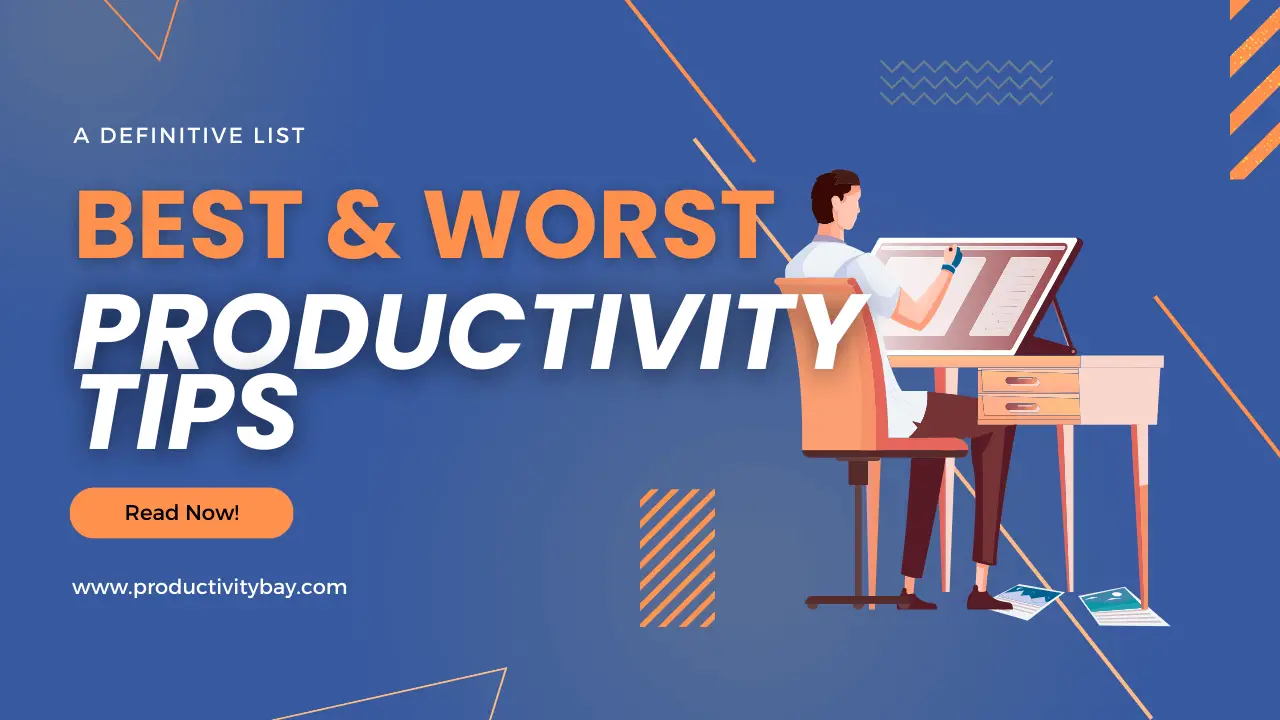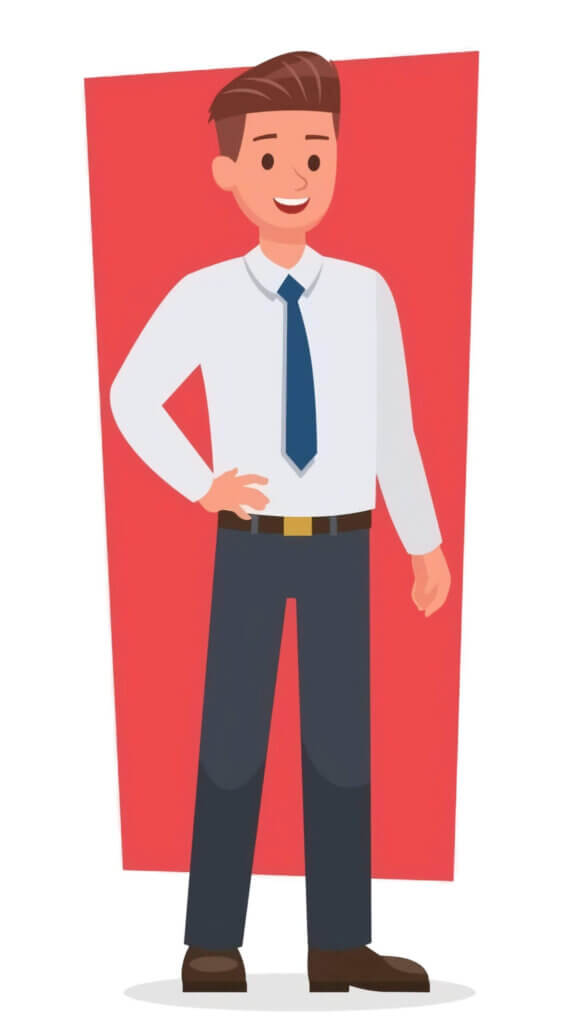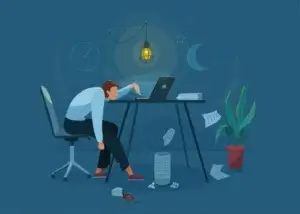As a small business owner, you understand the importance of maximizing your productivity to achieve success in today’s fast-paced business world.
With the constant advancements in technology and the increasing demands from customers, it is crucial to stay on top of the latest productivity hacks to ensure that you are utilizing your time and resources effectively.
In this guide, we will delve into various aspects of productivity that are specifically tailored to the needs of small business owners.
We will explore strategies that can help you streamline your workflow, manage your time more efficiently, and make the most out of the resources at your disposal.
One of the key areas we will focus on is the utilization of technology and digital tools to enhance productivity.
We will discuss the latest software applications and online platforms that can automate repetitive tasks, track project progress, and facilitate collaboration among team members.
From project management tools to communication platforms, we will provide you with a comprehensive overview of the best tools available in 2024.
Additionally, we will delve into the importance of setting clear goals and priorities to ensure that you are working on tasks that align with your overall business objectives.
We will discuss techniques such as the Eisenhower Matrix and the Pomodoro Technique that can help you prioritize your tasks and make the most out of your limited time.
Furthermore, we will explore the concept of work-life balance and its impact on productivity. As a small business owner, it can be easy to get caught up in the demands of your business and neglect your personal well-being.
We will provide you with practical tips and strategies to help you strike a healthy balance between work and personal life, allowing you to recharge and perform at your best.
Lastly, we will touch upon the importance of continuous learning and personal development in enhancing productivity. We will discuss the benefits of staying updated with industry trends, attending conferences and workshops, and seeking mentorship opportunities.
By investing in your own growth, you can stay ahead of the competition and bring fresh ideas and perspectives to your business.
Overall, this guide aims to equip you with the knowledge and tools necessary to optimize your productivity as a small business owner in 2024.
Whether you are just starting out or have been in business for years, there is always room for improvement when it comes to productivity. So, let’s dive in and discover the productivity hacks that can take your business to new heights!
1. Embrace Automation
One of the key productivity hacks for small business owners is to embrace automation. By automating repetitive tasks, you can save valuable time and redirect your focus towards more important aspects of your business.
Consider using tools and software that can automate processes such as email marketing, social media scheduling, and customer relationship management.
Automation has become increasingly important in today’s fast-paced business environment. It not only helps streamline operations but also improves efficiency and reduces human error.
With the advancements in technology, there are numerous automation tools available that cater to different business needs.
For example, if you are struggling with managing your email marketing campaigns, you can use an email automation tool that allows you to create automated workflows, segment your audience, and schedule emails in advance.
This will not only save you time but also ensure that your emails reach the right people at the right time.
Social media scheduling is another area where automation can be a game-changer for small business owners. Instead of manually posting content on multiple platforms, you can use social media management tools that allow you to schedule posts in advance.
This way, you can maintain a consistent presence on social media without spending hours every day on content creation and distribution.
Customer relationship management (CRM) is another aspect of business that can greatly benefit from automation. With a CRM system in place, you can automate tasks such as lead nurturing, follow-ups, and customer support. This not only helps you stay organized but also ensures that you provide a seamless experience to your customers.
By embracing automation, small business owners can free up their time and focus on strategic decision-making, innovation, and building relationships with customers.
It allows you to work smarter, not harder, and maximize your productivity in the long run.
2. Utilize Project Management Tools
Effective project management is crucial for small business owners. By utilizing project management tools, you can streamline your workflow, assign tasks, set deadlines, and track progress more efficiently.
Tools like Trello, Asana, or Monday.com can help you stay organized and ensure everyone on your team is on the same page.
In today’s fast-paced business environment, staying organized and managing projects effectively is essential for the success of any small business. With multiple tasks, deadlines, and team members to coordinate, it can quickly become overwhelming without the right tools in place.
Project management tools offer a comprehensive solution to this challenge, providing a centralized platform where you can plan, execute, and monitor your projects.
These tools offer a range of features designed to enhance collaboration, improve productivity, and ensure that tasks are completed on time. One popular project management tool is Trello.
Trello uses a visual board system, allowing you to create lists and cards to represent tasks and projects. You can easily drag and drop cards between lists to indicate progress, assign tasks to team members, and set due dates.
Trello also offers integration with other tools, such as Slack and Google Drive, making it easy to collaborate and share files. Another widely used project management tool is Asana.
Asana offers a more comprehensive approach to project management, with features such as task dependencies, subtasks, and project timelines. You can create projects, assign tasks to team members, and track progress through various views, including lists, boards, and calendars.
Asana also integrates with popular communication tools like Slack and Microsoft Teams, ensuring seamless collaboration across different platforms. For those looking for a more customizable project management solution, Monday.com is an excellent choice.
Monday.com offers a highly visual and flexible interface, allowing you to create custom workflows, automate repetitive tasks, and track progress using a variety of views, including timelines, calendars, and Gantt charts.
With its extensive integration capabilities, Monday.com can be easily integrated with other tools such as Jira, Dropbox, and Salesforce, making it a powerful tool for managing complex projects.
Regardless of the specific project management tool you choose, the key is to find one that aligns with your business needs and the way your team works. It’s important to involve your team in the selection process to ensure that the tool meets their requirements and preferences.
Additionally, providing proper training and support to your team will help them make the most of the project management tool, maximizing its benefits for your business.
In conclusion, project management tools are essential for small business owners to streamline their workflow, assign tasks, set deadlines, and track progress effectively.
Whether you choose Trello, Asana, Monday.com, or any other project management tool, investing in the right tool will help you stay organized, improve collaboration, and ultimately drive the success of your projects and business.
3. Implement Time Tracking
Time tracking is essential for understanding how you and your team spend your time. By implementing time tracking tools, you can identify time-wasting activities, optimize your schedule, and allocate resources more effectively.
Tools like Harvest or Toggl can provide valuable insights into your productivity and help you make data-driven decisions.
Implementing time tracking in your workflow can have numerous benefits. Firstly, it allows you to gain a clear understanding of how you and your team are utilizing your time.
With accurate time tracking data, you can identify areas where you may be spending excessive time or resources. This insight enables you to make informed decisions on how to optimize your schedule and allocate resources more effectively.
Additionally, time tracking can help you identify time-wasting activities. By monitoring the time spent on different tasks and projects, you can pinpoint any activities that are not adding value or contributing to your goals.
This information is invaluable as it allows you to eliminate or streamline these activities, increasing overall productivity.
Furthermore, time tracking tools such as Harvest or Toggl provide detailed reports and analytics. These reports can give you a comprehensive overview of your team’s productivity, allowing you to identify trends and patterns.
For example, you may discover that certain team members are consistently spending more time on specific tasks, indicating a need for additional training or support. On the other hand, you may find that certain projects are consistently taking longer than expected, prompting a review of the project management process.
The data provided by time tracking tools can also assist in making data-driven decisions. For instance, if you are considering taking on a new project, you can refer to past time tracking data to estimate the resources required and the potential impact on your team’s workload.
This information can help you make more accurate projections and ensure that you are not overcommitting your team.
In conclusion, implementing time tracking tools in your workflow is a crucial step towards improving productivity and resource allocation.
By gaining insights into how you and your team spend your time, you can identify areas for improvement, eliminate time-wasting activities, and make data-driven decisions.
Harvest or Toggl are just a few examples of the many time tracking tools available, so find one that suits your needs and start reaping the benefits of effective time management.
4. Delegate and Outsource
As a small business owner, it’s important to recognize that you can’t do everything on your own. Delegating tasks and outsourcing certain responsibilities can free up your time and allow you to focus on higher-level strategic activities.
Identify tasks that can be delegated or outsourced, such as administrative work, bookkeeping, or content creation, and find reliable professionals or freelancers to handle them.
Delegating tasks to others is not a sign of weakness or incompetence; in fact, it is a smart business move. By assigning tasks to individuals who are skilled in those areas, you can ensure that the work is done efficiently and effectively.
This allows you to focus on the aspects of your business where you excel and can make the greatest impact.
When it comes to outsourcing, there are numerous options available.
You can hire virtual assistants to handle administrative tasks, such as answering emails, scheduling appointments, and managing your calendar.
This can save you valuable time that can be better spent on growing your business.
Additionally, you can outsource your bookkeeping to a professional accountant or bookkeeper. They can handle tasks such as payroll, invoicing, and financial reporting, ensuring that your business remains compliant with tax regulations and that your financial records are accurate and up to date.
Content creation is another area that can be effectively outsourced. Hiring freelance writers or content creators can save you time and ensure that your website, blog, and social media platforms are consistently updated with high-quality content.
This can help attract and engage your target audience, ultimately driving more traffic and potential customers to your business.
When delegating or outsourcing tasks, it’s important to establish clear expectations and communicate effectively with the individuals or companies you are working with.
Provide them with the necessary information and resources to complete the tasks successfully, and regularly check in to ensure that everything is on track.
Remember, as a small business owner, your time is valuable. By delegating and outsourcing tasks, you can focus on the core aspects of your business and maximize your productivity and growth potential.
5. Prioritize and Set Goals
Setting clear priorities and goals is essential for maintaining productivity. Take the time to identify your most important tasks and set achievable goals that align with your business objectives.
Break down larger goals into smaller, actionable steps to make them more manageable and track your progress along the way.
When it comes to prioritizing, it’s important to assess the urgency and importance of each task. This can be done by considering deadlines, the impact on your business, and the potential consequences of not completing the task in a timely manner.
By understanding the relative importance of each task, you can allocate your time and resources effectively. In addition to prioritizing tasks, setting goals is crucial for staying focused and motivated. Goals provide a sense of direction and purpose, giving you something to work towards.
However, it’s important to set goals that are realistic and achievable. Setting unrealistic goals can lead to frustration and a decrease in productivity.
To make your goals more attainable, break them down into smaller, actionable steps. This allows you to tackle each step one at a time, making the overall goal more manageable.
For example, if your goal is to increase sales by 20%, you can break it down into smaller steps such as improving marketing strategies, expanding your customer base, and optimizing your sales process.
Tracking your progress is also essential for maintaining productivity. By regularly reviewing your goals and tracking your progress, you can identify any areas that need improvement and make necessary adjustments.
This not only helps you stay on track but also provides a sense of accomplishment as you see your progress over time. In conclusion, prioritizing tasks and setting achievable goals are key components of maintaining productivity.
By understanding the importance of each task and setting realistic goals, you can stay focused and motivated. Breaking down goals into smaller steps and tracking your progress allows you to make continuous improvements and ultimately achieve success in your business.
6. Minimize Distractions
In today’s digital age, distractions are abundant. From the constant pinging of notifications on our smartphones to the temptation of scrolling through social media feeds, it’s no wonder that our attention span is becoming increasingly fragmented.
To maximize productivity and focus, it’s crucial to minimize distractions as much as possible.
One effective strategy is to turn off notifications on your devices. Whether it’s email alerts, social media updates, or news notifications, these constant interruptions can derail your concentration and disrupt your workflow.
By disabling these notifications, you can create a more peaceful and focused work environment.
Another helpful technique is to set specific times for checking emails or social media. Instead of constantly checking your inbox or refreshing your news feed, allocate dedicated time slots in your schedule for these activities.
This way, you can stay connected without allowing these platforms to consume valuable chunks of your time throughout the day.
Creating a dedicated workspace that is free from distractions is also essential. Whether you have a separate room in your home or a designated area in a shared space, it’s important to have a physical environment that promotes focus and concentration.
Clear away any clutter, organize your supplies, and make sure you have a comfortable chair and a well-lit area to work in.
In addition to these strategies, there are various digital tools and apps available that can help minimize distractions.
For example, there are browser extensions that block access to certain websites or limit your time spent on them.
There are also apps that enable you to set timers or create virtual boundaries to prevent you from mindlessly scrolling through social media or getting lost in a YouTube rabbit hole.
Ultimately, minimizing distractions requires discipline and conscious effort. It’s important to recognize the impact that distractions can have on your productivity and take proactive steps to eliminate or reduce them.
By doing so, you can create an environment that supports deep work and allows you to accomplish your tasks more efficiently.
7. Implement the Pomodoro Technique
The Pomodoro Technique is a time management method that can help boost productivity and focus. The technique involves breaking your work into 25-minute intervals, called “Pomodoros,” with short breaks in between.
After completing four Pomodoros, take a longer break. This method can help you maintain focus and prevent burnout.
Implementing the Pomodoro Technique can be highly beneficial for individuals looking to enhance their productivity and manage their time effectively.
By dividing your work into manageable chunks, you can create a sense of structure and purpose in your tasks. The 25-minute intervals, known as Pomodoros, act as a time constraint that encourages you to stay focused and avoid distractions.
During each Pomodoro, it is crucial to concentrate solely on the task at hand. This means eliminating any potential interruptions, such as checking emails or browsing social media. By dedicating your full attention to the task, you can maximize your productivity and complete it more efficiently.
After completing a Pomodoro, it is essential to take a short break. This break allows your mind to rest and recharge, preventing mental fatigue and burnout.
We have discussed about the use of Pomodoro techniques and time blocking in our article, “The Best and Worst Productivity Tips: A Definitive List“.
However, it is recommended to engage in activities that help you relax and recharge during these breaks, such as stretching, deep breathing exercises, or grabbing a healthy snack. Once you have completed four Pomodoros, it is time for a longer break.
This break typically lasts around 15 to 30 minutes, giving you ample time to recharge and rejuvenate. During this break, it is essential to step away from your workspace and engage in activities that help you unwind.
You could go for a walk, listen to music, or simply enjoy a cup of tea. The Pomodoro Technique not only helps improve focus and productivity but also promotes a healthy work-life balance.
By incorporating regular breaks into your work routine, you can prevent burnout and maintain your overall well-being. Additionally, the time constraint of each Pomodoro encourages you to prioritize tasks and work more efficiently, ultimately leading to increased productivity.
To implement the Pomodoro Technique effectively, it is crucial to find a timer or use a Pomodoro app that alerts you when each interval is complete.
This will help you stay on track and ensure that you adhere to the designated time intervals. Additionally, it can be helpful to create a to-do list or schedule outlining the tasks you plan to tackle during each Pomodoro.
This will provide you with a clear roadmap and help you stay organized. Overall, the Pomodoro Technique is a valuable tool for individuals looking to optimize their time management and boost their productivity.
By implementing this technique into your daily routine, you can enhance your focus, prevent burnout, and accomplish more in less time. Give it a try and experience the positive impact it can have on your work and personal life.
8. Practice Effective Communication
Effective communication is vital for productivity, especially when working with a team. Establishing clear channels of communication and ensuring everyone is on the same page is essential for a smooth workflow.
When team members are not effectively communicating, it can lead to misunderstandings, delays, and even conflicts.
One way to practice effective communication is to utilize tools like Slack or Microsoft Teams. These platforms provide a centralized space where team members can share updates, ask questions, and collaborate on projects.
By using these tools, team members can easily access important information and stay connected, even if they are not physically present in the same location.
In addition to using communication tools, it is also important to establish guidelines and expectations for communication within the team.
This can include setting regular check-in meetings, encouraging open and honest communication, and providing feedback in a constructive manner.
By establishing these guidelines, team members will feel more comfortable expressing their ideas and concerns, leading to a more productive and harmonious work environment.
Furthermore, effective communication also involves active listening. It is important to listen attentively to what others are saying, ask clarifying questions, and provide feedback when necessary.
By actively listening, team members can better understand each other’s perspectives and work together more effectively.
Another aspect of effective communication is being mindful of different communication styles and preferences. Some team members may prefer written communication, while others may prefer face-to-face or video meetings.
By being flexible and accommodating different communication styles, team members can feel more comfortable and engaged in the communication process.
Overall, practicing effective communication is crucial for productivity and team success.
By establishing clear channels of communication, utilizing tools like Slack or Microsoft Teams, setting guidelines for communication, actively listening, and being mindful of different communication styles, teams can foster a collaborative and efficient work environment.
9. Streamline Your Email Management
Email overload can be a significant drain on productivity. To streamline your email management, consider implementing strategies such as using filters and labels to organize your inbox, setting specific times for checking and responding to emails, and unsubscribing from unnecessary newsletters or mailing lists.
In addition to these strategies, there are several other techniques you can employ to further enhance your email management.
One effective method is to prioritize your emails based on urgency and importance. This can be done by creating different folders or categories for different types of emails, such as “Urgent,” “Important,” and “Low Priority.”
By categorizing your emails in this way, you can quickly identify and address the most critical messages first, ensuring that nothing important slips through the cracks.
Another useful technique is to utilize email templates or canned responses for frequently sent messages. If you find yourself repeatedly composing similar emails, such as responses to customer inquiries or requests for information, creating templates can save you valuable time and effort.
By simply customizing the template with the necessary details, you can send out professional and consistent responses in a matter of seconds.
Moreover, it’s crucial to develop a habit of regularly decluttering your inbox. Take the time to delete or archive old and irrelevant emails, keeping only those that are truly necessary for future reference.
This will not only make it easier to find important messages when you need them but also prevent your inbox from becoming overwhelming and unmanageable.
Furthermore, consider utilizing email management tools and software that can automate certain tasks and help you stay organized. These tools often offer features such as email scheduling, email tracking, and reminders, which can greatly improve your efficiency and ensure that no important emails slip through the cracks.
Lastly, it’s important to establish clear boundaries and expectations when it comes to email communication. Let your colleagues and clients know your preferred response time and availability, so they understand when to expect a reply from you.
By setting these expectations upfront, you can avoid unnecessary stress and interruptions throughout the day. In conclusion, streamlining your email management is essential for maximizing productivity and reducing stress.
By implementing strategies such as organizing your inbox, prioritizing emails, utilizing templates, decluttering regularly, and leveraging email management tools, you can regain control over your inbox and focus on what truly matters in your workday.
Cloud-based collaboration has revolutionized the way teams work together, enabling seamless communication and efficient sharing of information.
With the rise of remote work and businesses expanding across multiple locations, these tools have become essential for maintaining productivity and streamlining workflows.
One of the key advantages of cloud-based collaboration tools like Google Workspace or Microsoft 365 is the ability to store and access documents from anywhere, at any time.
This eliminates the need for physical storage devices and allows team members to work on the same document simultaneously, regardless of their location.
This real-time collaboration feature not only saves time but also ensures that everyone is working with the most up-to-date version of the document.
Furthermore, these tools offer a wide range of features that enhance productivity and facilitate effective teamwork.
For example, they provide commenting and annotation features, allowing team members to provide feedback and suggestions directly on the document. This eliminates the need for lengthy email chains or meetings to discuss changes, making the collaboration process more efficient and transparent.
Cloud-based collaboration tools also offer advanced security measures to protect sensitive information. They often include encryption, multi-factor authentication, and regular backups to ensure data integrity and prevent unauthorized access.
This provides peace of mind for businesses that handle confidential data and need to comply with privacy regulations.
Additionally, these tools integrate seamlessly with other applications and services, further enhancing productivity and collaboration.
For instance, they can be integrated with project management tools, allowing teams to track progress, assign tasks, and set deadlines.
They can also be integrated with communication tools like Slack or Microsoft Teams, enabling instant messaging and video conferencing for seamless communication.
Overall, embracing cloud-based collaboration tools is crucial for businesses looking to optimize their productivity and streamline their workflows.
By providing real-time access to documents, facilitating effective teamwork, ensuring data security, and integrating with other applications, these tools empower teams to work efficiently and achieve their goals.
11. Continuously Learn and Improve
Productivity is an ongoing journey, and it’s important to continuously learn and improve. Stay updated with the latest trends, tools, and strategies in your industry. Invest in professional development, attend webinars or workshops, and seek out opportunities to learn from other successful small business owners.
In today’s rapidly changing business landscape, it’s crucial to stay ahead of the curve. New technologies, market trends, and consumer behaviors are constantly emerging, and as a small business owner, you need to adapt and evolve to remain competitive.
By investing in your own learning and growth, you can ensure that you are equipped with the knowledge and skills necessary to navigate these changes effectively.
One way to stay updated is by actively seeking out information and resources related to your industry. This could involve subscribing to industry publications, following thought leaders on social media, and participating in online forums or communities.
Forbes – Small Business section is a great place to learn more about the industry and staying up to date with the current trends.
By immersing yourself in the latest news and discussions, you can gain valuable insights and stay informed about emerging trends and best practices.
Attending webinars or workshops is another great way to enhance your knowledge and skills. These events often feature industry experts who share their expertise and provide practical tips and strategies that you can apply to your own business.
Additionally, they offer opportunities to network with other professionals in your field, allowing you to exchange ideas and learn from their experiences. Professional development courses or certifications are also worth considering.
These programs are designed to provide in-depth knowledge and training in specific areas of your industry. Whether it’s mastering a new software, improving your marketing skills, or learning about the latest sales techniques, investing in your professional development can give you a competitive edge.
Furthermore, don’t underestimate the power of learning from others who have already achieved success in their small businesses.
Seek out mentors or join networking groups where you can connect with experienced entrepreneurs. By learning from their successes and failures, you can gain valuable insights and avoid making costly mistakes.
Remember, productivity is not just about working harder; it’s about working smarter. By continuously learning and improving, you can discover new strategies, tools, and techniques that can streamline your operations, increase efficiency, and ultimately drive growth for your small business. So, make it a priority to invest in your own learning and development – it will pay off in the long run.
12. Take Care of Yourself
Lastly, don’t forget to take care of yourself. Productivity is closely linked to your well-being and mindset. Prioritize self-care, get enough sleep, exercise regularly, and take breaks when needed. Remember that a healthy and balanced lifestyle is essential for long-term productivity and success.
In today’s fast-paced and demanding world, it’s easy to get caught up in the never-ending cycle of work and forget about our own well-being.
However, neglecting self-care can have detrimental effects on our productivity and overall quality of life. One of the most important aspects of self-care is getting enough sleep.
Sleep deprivation not only affects our physical health but also impairs our cognitive abilities and decision-making skills.
Lack of sleep can lead to decreased concentration, memory problems, and increased stress levels. Therefore, it’s crucial to prioritize sleep and aim for at least 7-8 hours of quality sleep each night. In addition to sleep, regular exercise is another vital component of self-care.
Engaging in physical activities not only improves our physical health but also boosts our mental well-being. Exercise releases endorphins, which are natural mood-enhancers, and reduces stress and anxiety.
Whether it’s going for a run, practicing yoga, or playing a sport, finding an exercise routine that suits your preferences and schedule is essential for maintaining a healthy lifestyle.
Taking breaks throughout the day is also crucial for maintaining productivity and preventing burnout. Our brains are not designed to work continuously for long periods without rest.
Studies have shown that taking short breaks during tasks can actually improve focus and productivity. Whether it’s a short walk outside, a quick meditation session, or simply closing your eyes and taking a few deep breaths, incorporating regular breaks into your workday can help recharge your mind and increase overall productivity.
Furthermore, it’s important to engage in activities that bring you joy and relaxation. Whether it’s reading a book, listening to music, spending time with loved ones, or pursuing a hobby, carving out time for activities that nourish your soul is essential for maintaining a healthy work-life balance.
These activities not only provide a much-needed break from work but also help reduce stress and improve overall well-being.
In conclusion, taking care of yourself is not a luxury but a necessity for long-term productivity and success.
Prioritizing self-care by getting enough sleep, exercising regularly, taking breaks, and engaging in activities that bring you joy will not only improve your overall well-being but also enhance your ability to perform at your best.
So remember, don’t neglect yourself in the pursuit of productivity, because true success is achieved when both your mind and body are in harmony.
Conclusion
It is evident that implementing essential hacks for small business owners in 2024 can significantly boost productivity.
By staying organized and prioritizing tasks effectively, entrepreneurs can maximize their efficiency and accomplish more in less time.
Adopting technology tools and automation can streamline daily operations, eliminating repetitive tasks and allowing entrepreneurs to focus on core business activities.
Moreover, effective communication and collaboration strategies are crucial for fostering teamwork and ensuring smooth workflow within the organization.
Small business owners should also prioritize self-care and work-life balance to maintain their productivity levels and prevent burnout. By following these essential hacks, entrepreneurs can stay ahead of the competition and achieve long-term success in their ventures.
















Leave a Reply